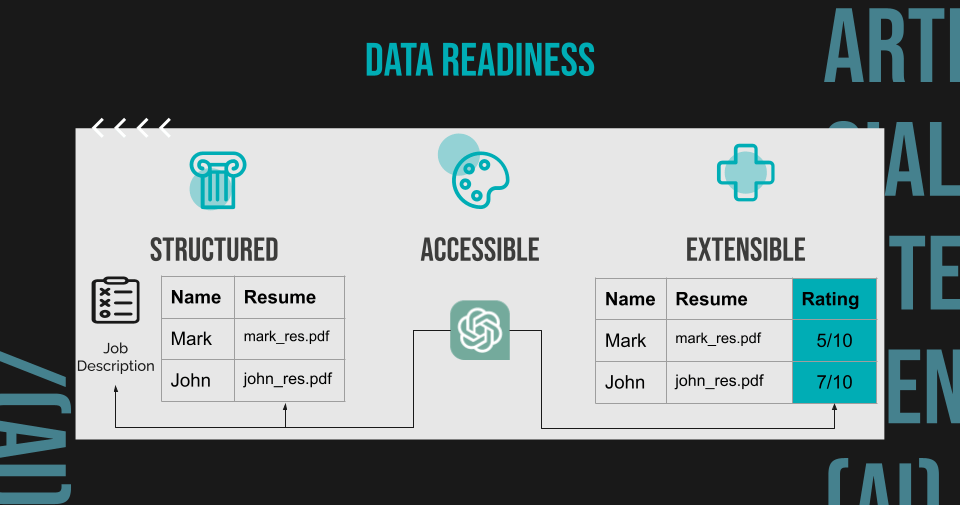Is you data ready for the AI Leap
One of the main pillars to start implementing AI and Automation in you process is having ready data


The Importance of Data Readiness for AI Success
In the era of AI-driven automation, data readiness is one of the most critical factors that determine the success of AI implementations. Without structured, accessible, and extensible data, even the most advanced AI systems will struggle to provide meaningful results. In this blog, we’ll discuss why data readiness matters, the key components of AI-ready data, and showcase a practical example of a hiring system that leverages AI for resume analysis.
Why Does Data Readiness Matter?
AI thrives on high-quality data. The effectiveness of any AI system depends on the data it is trained on and the quality of inputs it receives during execution. Poorly organized, inaccessible, or incomplete data leads to inaccurate outputs, unreliable predictions, and inefficient automation. Ensuring your data is structured, accessible, and extensible is the foundation for successful AI implementation.
Key Components of AI-Ready Data
Structured Data: Organized in a format that is easy to process, such as databases, spreadsheets, or tagged documents.
Accessible Data: Stored in a way that AI systems can retrieve it efficiently, such as cloud storage with API integrations.
Extensible Data: Designed to evolve, allowing for the addition of new fields, categories, or attributes as business needs grow.
Practical Example:
AI-Powered Hiring System
Let’s imagine a simple hiring system that uses AI to compare job descriptions with candidate resumes. For this system to function efficiently, data readiness is crucial. Here’s how it works:
1. Structured Data for Job Descriptions and Resumes
The job descriptions are stored in a centralized cloud database.
A separate table contains all candidates who have applied, with their resumes attached.
2. Data Accessibility for AI and Automation
The AI model and automation tools must have permission to read both job descriptions and candidate resumes.
The system should support real-time access to fetch and process data as applications come in.
3. Extensibility for AI Decision-Making
The database should allow for the addition of a ranking column to store the AI’s evaluation of each candidate.
This ranking can be updated dynamically as AI models refine their matching algorithms.
How This Translates to Business Success
By ensuring data readiness, businesses can:
✅ Automate hiring decisions with AI-driven resume screening.
✅ Reduce time spent manually evaluating candidates.
✅ Improve the accuracy of job-candidate matching.
✅ Scale the hiring process effortlessly with minimal human intervention.
Final Thoughts
AI-driven automation is only as effective as the data it operates on. Businesses must invest in structuring, organizing, and making their data accessible to unlock the full potential of AI. At PIA Solutions, we specialize in helping small and medium companies prepare their data for AI integration, ensuring seamless automation and efficiency gains.
